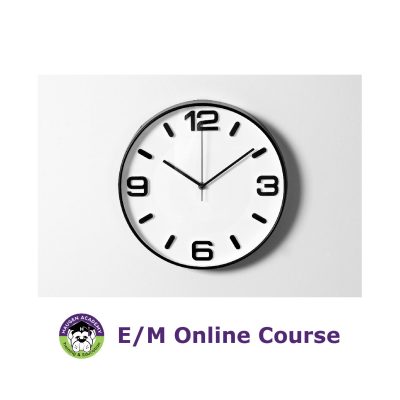This page addresses follow-up questions and additional information pertinent to our webinar
Let's 'Modify' That Evaluation and Management Service.
** The coding information and guidance are valid at the time of publishing. Learners are encouraged to research
subsequent official guidance in the areas associated with the topic as they can change rapidly.
Q: If the patient has an appointment for a procedure with one doctor, and then an E/M visit with another doctor later in the day, does a 25 modifier still need to be appended since it’s two different doctors?
A: It depends. If the two doctors are from the same specialty and group practice, then yes, modifier 25 is needed on the E/M visit. Documentation should still demonstrate that the E/M is separately identifiable. If the two doctors are not from the same specialty and group practice, modifier 25 is not needed.
Q: For modifier 25, the instructions state only for use if E/M and procedure are performed by the same provider? Can you elaborate on what is meant by “same provider”?
A: “Same provider” mean any provider from the same specialty and subspecialty, who belongs to the same group practice.
- Same Specialty = 2-digit specialty under which the providers are enrolled with Medicare
- Same Group = Tax ID #
Q: For post op visits where a complication is discovered and does require a return to the operating room, would modifier 24 be used for that visit?
A: Actually, 78 would the appropriate modifier. Unplanned return to the operating room by the same physician or other QHP following initial procedure for a related procedure during the post operative period.
Q: In the Ortho clinic, our Provider very frequently will examine a patient with a fracture. He will place a splint and follow up with the patient so fracture care is performed. Fracture care has a 90 day global as well as a reduction procedure. Would we put a modifier 57 on the E/M for that visit where the decision was made for the fracture care?
A: You would apply modifier 57 on the E/M visit when the decision for major surgery (fracture care) is made and it will be performed the same day or the following day.
Q: We currently utilize visiting ortho surgeons for THA, TKA, etc. Patient is admitted to Same-Day-Surgery and then moved to OBSERVATION or INPATIENT status the next day under a HOSPITALIST. If the visit only pertains to procedure, and no other condition, is this billable? Or do these visits fall under the global period?
A: For this we will need to consider medical necessity. If the hospitalist is engaging in medical care for active medical conditions not directly related to the surgery and is impacting patient recovery, such as hypertension or diabetes, then the service could be considered reasonable and necessary and separately reportable.
However, if the hospitalist is required to admit and follow post-surgery without management of any other identifiable conditions, then this would likely be deemed incidental perioperative services and not medically necessary by Payors. This could result in non-payment. It is also possible that there may be some sort of existing agreement by the parties involved in scenarios like this.
Q: What about when a patient moves from inpatient to swing as extended time needed for rehab? Does that become AFTERCARE, and is therefore billable?
A: Medical necessity is always the overarching factor. If the need for extended rehab is due to other patient factors not just simply related to the surgical procedure, then is could be considered separately reportable. There would need to be some medical reason for extended rehab.
Looking for additional information on this topic?

Emily Lomaquahu, CPC, CPMA, CEDC
Senior Coding Quality Auditor & Educator
Emily is a Senior Coding Quality Auditor for Haugen Consulting Group and brings over a decade of experience to the profee team! She began her career as an auditor and with her keen eye for detail, she quickly found it was a perfect fit. Emily thrives in a collaborative environment and enjoys creating high-quality trainings to help providers and coders navigate charts and improve their accuracy. She earned a bachelor’s degree from the University of Colorado, in Denver. Emily specializes in Evaluation and Management (E/M), Primary Care, Anesthesia, Emergency Department, and Neurology, though she says Anesthesia and Neurology are her favorites! She is a Certified Professional Coder (CPC), Certified Professional Medical Auditor (CPMA), and Certified Emergency Department Coder (CEDC).


Not seeing the CEU or how to obtain CEU’s for this webinar listed. Could you help please?
Hi Barb, we are happy to help! The CEUs are to the left of the video underneath the Handouts Icon. You can relaunch the webinar using the link in your confirmation email. Our FAQ page is a great resource for common learner questions! https://www.thehaugengroup.com/about/faqs/
I watched this webinar and did the survey, but have not received the CEUs yet.
Hi Laura,
The handouts, test for AAPC members, and CEUs are located to the left of the webinar video! Please refer to our FAQ page for additional instructions: https://www.thehaugengroup.com/about/faqs/
Thank you!
Haugen Academy Learning Team